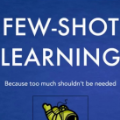Classifying and analyzing human cells is a lengthy procedure, often involving a trained professional. In an attempt to expedite this process, an active area of research involves automating cell classification through use of deep learning-based techniques. In practice, a large amount of data is required to accurately train these deep learning models. However, due to the sparse human cell datasets currently available, the performance of these models is typically low. This study investigates the feasibility of using few-shot learning-based techniques to mitigate the data requirements for accurate training. The study is comprised of three parts: First, current state-of-the-art few-shot learning techniques are evaluated on human cell classification. The selected techniques are trained on a non-medical dataset and then tested on two out-of-domain, human cell datasets. The results indicate that, overall, the test accuracy of state-of-the-art techniques decreased by at least 30% when transitioning from a non-medical dataset to a medical dataset. Second, this study evaluates the potential benefits, if any, to varying the backbone architecture and training schemes in current state-of-the-art few-shot learning techniques when used in human cell classification. Even with these variations, the overall test accuracy decreased from 88.66% on non-medical datasets to 44.13% at best on the medical datasets. Third, this study presents future directions for using few-shot learning in human cell classification. In general, few-shot learning in its current state performs poorly on human cell classification. The study proves that attempts to modify existing network architectures are not effective and concludes that future research effort should be focused on improving robustness towards out-of-domain testing using optimization-based or self-supervised few-shot learning techniques.
翻译:对人类细胞进行分类和分析是一个漫长的程序,往往涉及经过培训的专业人员。为了加快这一过程,一个活跃的研究领域涉及通过使用深层次学习技术实现细胞分类自动化。在实践中,需要大量数据来准确培训这些深层次学习模型。然而,由于目前可用的人类细胞数据集稀少,这些模型的性能通常较低。本项研究调查了使用少量基于学习的技术来减轻数据要求以减少准确培训数据要求的可行性。本项研究由三部分组成:首先,通过使用深层次学习技术来评估目前最新的细胞分类,首先,通过使用深层次学习技术对细胞进行自动化分析;最后,在从非医学数据集转换到医学数据集时,将使用低层次的测试,然后在目前状态的细胞分类中,将目前最先进的少数的学习技术进行非医学数据集的测试;最后,在人类总体数据分类中,将使用最精准的测试方法进行模拟的测试,然后将人类数据转换为不精确性数据。 13 在医学分类中,本项研究将现有可能的效益评估,如果有的话,则将目前的骨架结构和训练计划进行不同的修改。



